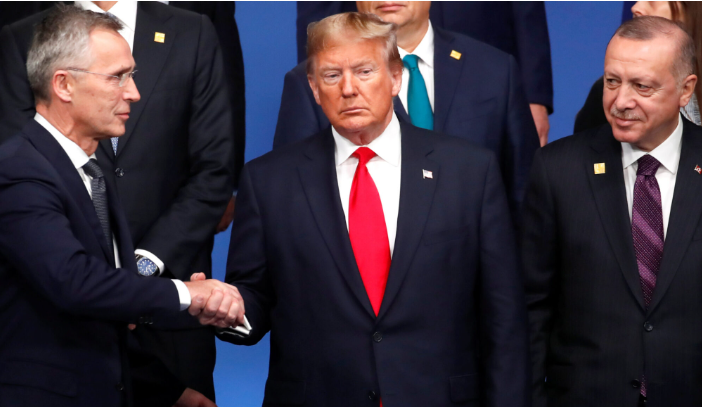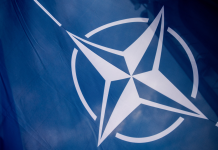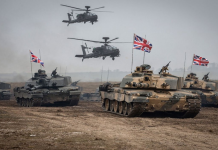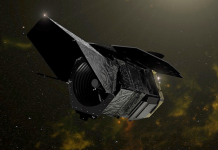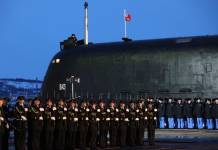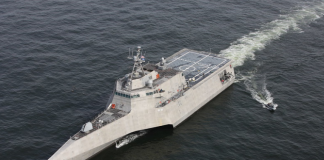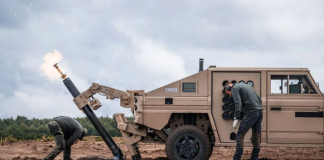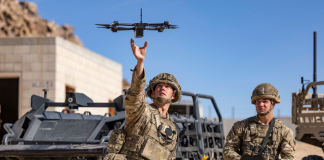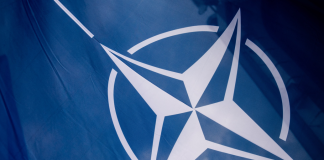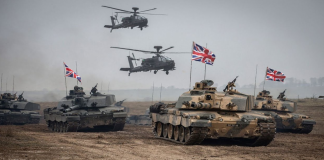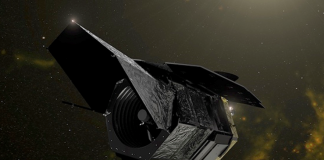By Ashley Roqu
WASHINGTON — A shakeup to US and European relations is assured under a second Donald Trump administration, but several analysts say that does not necessarily spell doom for American support for Ukraine or Washington’s future in NATO.
“It’s essential for us to stop [Russian President Vladimir] Putin in Ukraine, and what Trump means for that is still unclear,” John Herbst, former ambassador to Ukraine and senior director of the Atlantic Council’s Eurasia Center, said today in a briefing with other Atlantic Council experts.
Herbst said Trump’s public praise for Putin and calls to end the war quickly could be balanced out by some of the voices in the president’s inner circle, like Trump’s former CIA Director Mike Pompeo and former National Security Advisor Robert O’Brien. Both of whom would likely push back on any plan to cut support for Kyiv.
“I don’t know how Trump’s going to move, if he listens to the advice of the naives and begins to put into place a ceasefire/peace negotiation, which favors Russia, he will be called out by many people, including Republicans, for being a ‘patsy’ for Putin,” Herbst said, adding that Trump spoke with Ukrainian President Volodymyr Zelensky on Wednesday just after clinching the election.
Herbst said the potential for criticism from Trump’s own party “will have an impact, because one thing [Trump] does not want to be is taken for weak men and giving Ukraine to Putin or facilitating Putin’s control of Ukraine, which will lead only to worse things for the United States.”
“He’ll want to start his presidency looking like a leader on the world stage rather than handing Ukraine to Russia, and in turn, looking like a capitulator,” Rizzo said. “And what that means for Ukraine, I think, we’ll have to wait and see but I’m not as convinced … that his presidency spells an automatic disaster for our Ukrainian partners.”
Trump’s return to the White House will not just mean a potential push for a negotiated settlement between Moscow and Kyiv or a change in US weapons flows to Ukraine. World leaders are also preparing for what his second term will mean for NATO after he has spent years questioning the alliance’s value and publicly bashing countries not meeting the 2 percent GDP defense spending goal.
In the intervening years since his first White House tour and with a war on European soil, more countries are now hitting that target, and there are discussions on bumping that spending figure up towards the 3-percent range.
With nine out of 32 countries still shy of that threshold, Rizzo speculated that the incoming administration could view NATO though as more of a series of bilateral security agreements based on defense spending, or if the nation’s leader holds a similar word view to Trump.
But what the analysts did agree on is the pressure placed on new NATO Secretary General Mark Rutte to continue acting as the “Trump whisperer” by playing up NATO’s importance and the steady march towards getting all members up towards the 2 percent GDP benchmark.
“That number is now at 23 — that number should be at 32 — but Rutte needs to tell the story, and if part of that is allowing Trump to take credit for those defense spending increases, then I think that’s fine, and I do think there is probably actually some truth to that,” she added.
Rutte has already done just that when he publicly congratulated Trump for his reelection.
“When he was president he was the one in NATO who stimulated us to move over the 2 percent and now also thanks to him, in NATO, if you take out the numbers of the US for a moment, is above the 2 percent and I think very much that is his doing, his success, and we need to do more,” Rutte said ahead of a meeting of the European Political Community.

